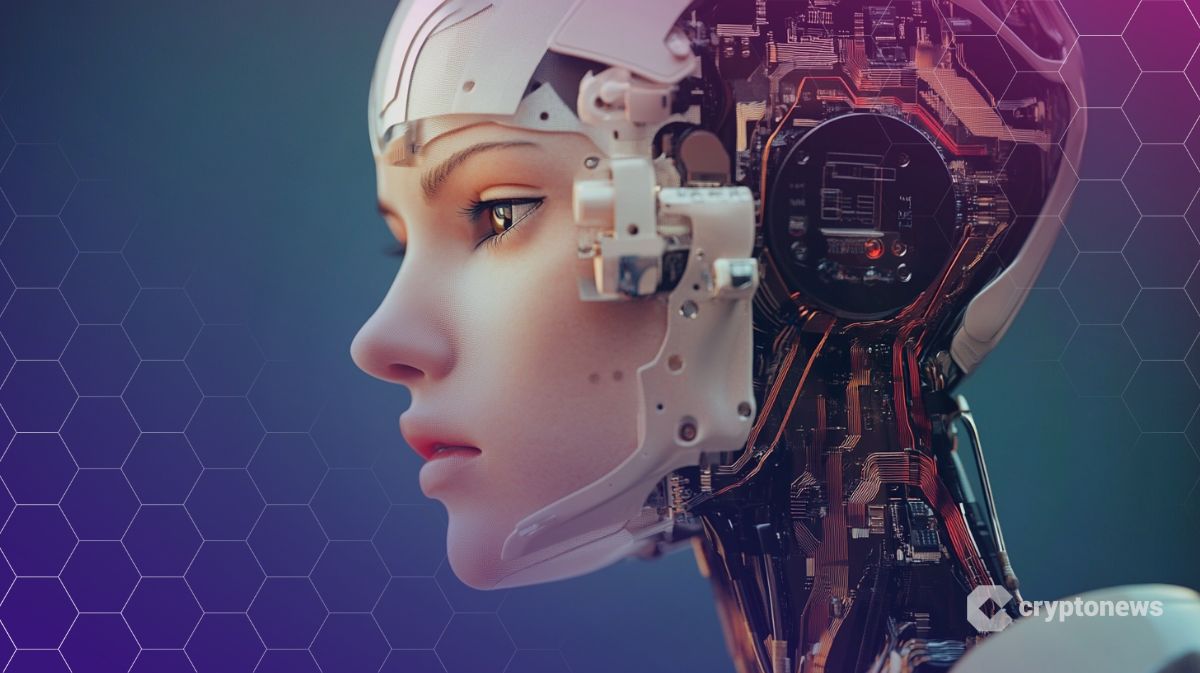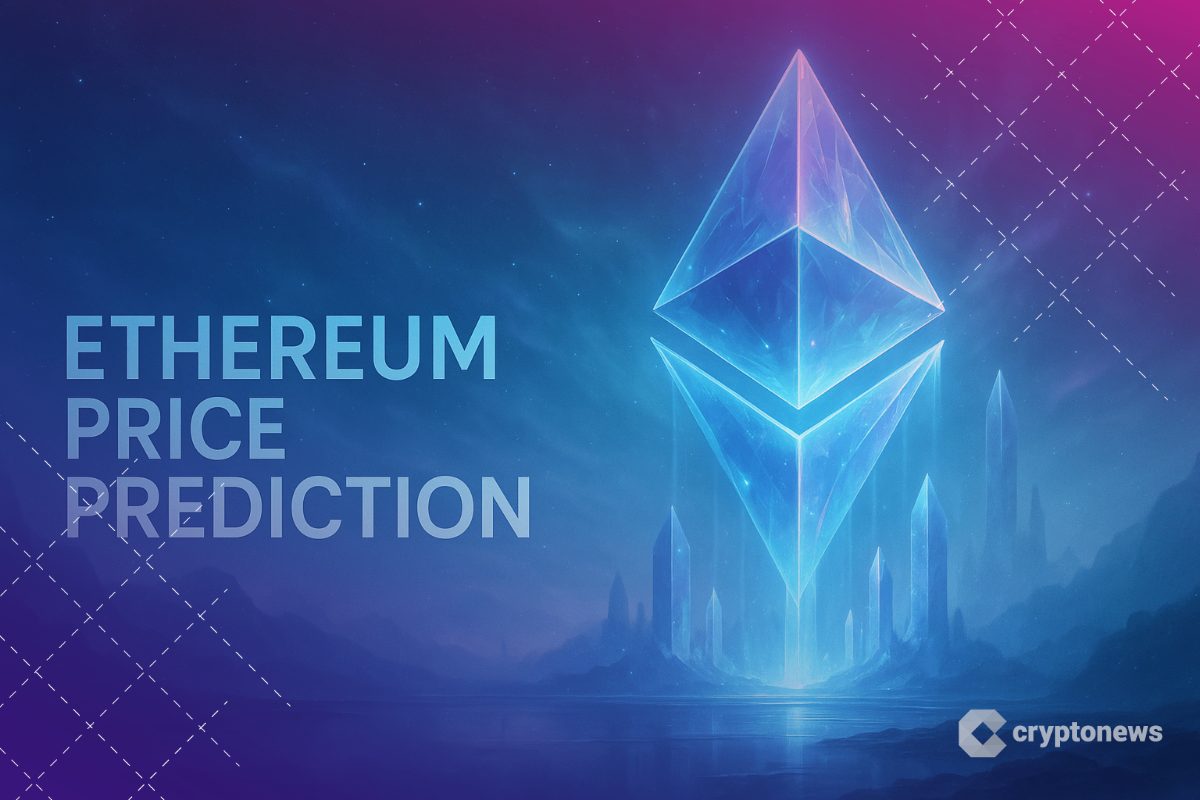Ethereum Has ‘Huge Opportunity’ to Fix AI’s Centralization Problem, Says Former Dev

Ethereum could play a key role in solving some of the most pressing problems facing artificial intelligence, according to Eric Connor, a former core developer of the blockchain.
In an April 15 post on X, Connor said Ethereum’s “biggest mainstream moment” could come through its integration with AI, as the sector struggles with centralization, opaque algorithms, and growing privacy concerns.
“AI is plagued by black-box models, centralized data silos, and privacy pitfalls,” Connor noted, adding that Ethereum is uniquely positioned to address these issues.
Ethereum Could Offer AI a Decentralized Alternative to Big Tech, Says Former Dev
He argued that Ethereum’s decentralized structure, transparent smart contracts, token-driven incentives, and built-in micropayments system could offer a better foundation for AI development, free from big tech monopolies.
Connor emphasized that smart contracts could be used to make AI training and data sourcing processes more transparent, mitigating the secrecy that currently surrounds many commercial AI platforms.
However, he acknowledged that large AI companies may resist such openness, as their business models rely heavily on data control.
Still, he said, growing demand for fairness and transparency could push developers toward Ethereum’s more ethical, collaborative approach.
Ethereum’s potential also extends to the fast-evolving field of agentic AI, where autonomous software agents can make decisions, execute transactions, and interact with smart contracts.
A recent post on the Ethereum blog highlighted how the blockchain supports these agents with real-time data access, digital asset ownership, and interoperability with decentralized applications.
Among the projects already building on this foundation are Luna, a virtual influencer with on-chain wallet control; AIXBT, an AI agent offering crypto market insights; and Botto, a decentralized NFT artist powered by community votes.
Additionally, tools like Bankr and HeyAnon are enabling conversational interfaces that allow users to interact with blockchain systems using natural language.
Connor concluded that Ethereum must continue building the tools, research, and real-world applications that make decentralized AI viable.
If successful, Ethereum could become a driving force in ethical AI adoption, expanding its impact well beyond finance.
VC Blames Layer-2s for Ether’s Waning Investment Appeal
Last month, crypto venture capitalist Nic Carter of Castle Island Ventures pointed to two key issues undermining Ether’s value: the rise of layer-2 (L2) scaling networks and unchecked token issuance.
He argued that “greedy Eth L2s” are siphoning off value from Ethereum’s base layer while giving little back.
He also criticized the Ethereum community’s acceptance of excessive token creation, claiming that “ETH was buried in an avalanche of its own tokens. Died by its own hand.”
Carter’s comments followed a similarly stark assessment from Quinn Thompson, founder of Lekker Capital, who declared that Ethereum is “completely dead” as an investment.
Thompson cited declining transaction activity, reduced user growth, and falling network revenues as signs that ETH no longer offers a strong investment case, despite its utility as a blockchain platform.
Back in September 2024, Carter warned that Ethereum’s fee revenue had plummeted by 99% over six months as L2s captured user activity and revenue without contributing to Ethereum’s base layer.
The post Ethereum Has ‘Huge Opportunity’ to Fix AI’s Centralization Problem, Says Former Dev appeared first on Cryptonews.
Read More

Ethereum Price Squeezed In Falling Channel – Bulls Eye Rebound To $4,788 If This Support Holds
Ethereum Has ‘Huge Opportunity’ to Fix AI’s Centralization Problem, Says Former Dev

Ethereum could play a key role in solving some of the most pressing problems facing artificial intelligence, according to Eric Connor, a former core developer of the blockchain.
In an April 15 post on X, Connor said Ethereum’s “biggest mainstream moment” could come through its integration with AI, as the sector struggles with centralization, opaque algorithms, and growing privacy concerns.
“AI is plagued by black-box models, centralized data silos, and privacy pitfalls,” Connor noted, adding that Ethereum is uniquely positioned to address these issues.
Ethereum Could Offer AI a Decentralized Alternative to Big Tech, Says Former Dev
He argued that Ethereum’s decentralized structure, transparent smart contracts, token-driven incentives, and built-in micropayments system could offer a better foundation for AI development, free from big tech monopolies.
Connor emphasized that smart contracts could be used to make AI training and data sourcing processes more transparent, mitigating the secrecy that currently surrounds many commercial AI platforms.
However, he acknowledged that large AI companies may resist such openness, as their business models rely heavily on data control.
Still, he said, growing demand for fairness and transparency could push developers toward Ethereum’s more ethical, collaborative approach.
Ethereum’s potential also extends to the fast-evolving field of agentic AI, where autonomous software agents can make decisions, execute transactions, and interact with smart contracts.
A recent post on the Ethereum blog highlighted how the blockchain supports these agents with real-time data access, digital asset ownership, and interoperability with decentralized applications.
Among the projects already building on this foundation are Luna, a virtual influencer with on-chain wallet control; AIXBT, an AI agent offering crypto market insights; and Botto, a decentralized NFT artist powered by community votes.
Additionally, tools like Bankr and HeyAnon are enabling conversational interfaces that allow users to interact with blockchain systems using natural language.
Connor concluded that Ethereum must continue building the tools, research, and real-world applications that make decentralized AI viable.
If successful, Ethereum could become a driving force in ethical AI adoption, expanding its impact well beyond finance.
VC Blames Layer-2s for Ether’s Waning Investment Appeal
Last month, crypto venture capitalist Nic Carter of Castle Island Ventures pointed to two key issues undermining Ether’s value: the rise of layer-2 (L2) scaling networks and unchecked token issuance.
He argued that “greedy Eth L2s” are siphoning off value from Ethereum’s base layer while giving little back.
He also criticized the Ethereum community’s acceptance of excessive token creation, claiming that “ETH was buried in an avalanche of its own tokens. Died by its own hand.”
Carter’s comments followed a similarly stark assessment from Quinn Thompson, founder of Lekker Capital, who declared that Ethereum is “completely dead” as an investment.
Thompson cited declining transaction activity, reduced user growth, and falling network revenues as signs that ETH no longer offers a strong investment case, despite its utility as a blockchain platform.
Back in September 2024, Carter warned that Ethereum’s fee revenue had plummeted by 99% over six months as L2s captured user activity and revenue without contributing to Ethereum’s base layer.
The post Ethereum Has ‘Huge Opportunity’ to Fix AI’s Centralization Problem, Says Former Dev appeared first on Cryptonews.
Read More

